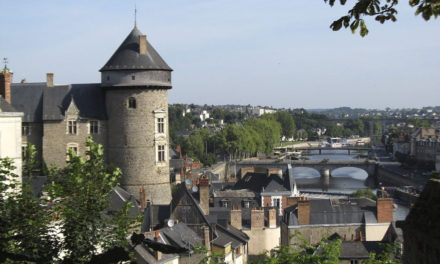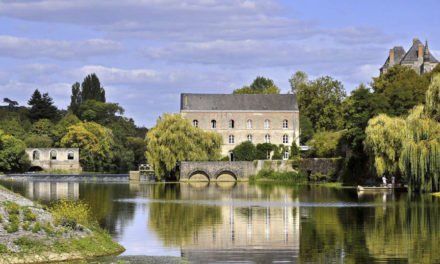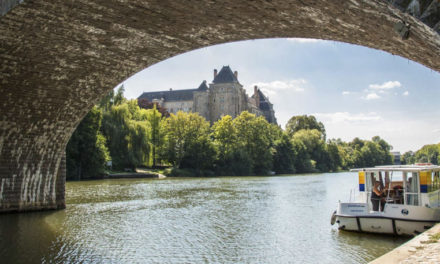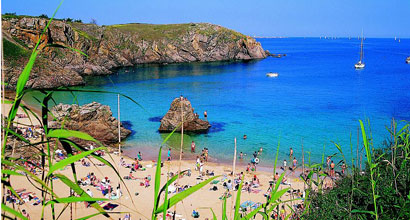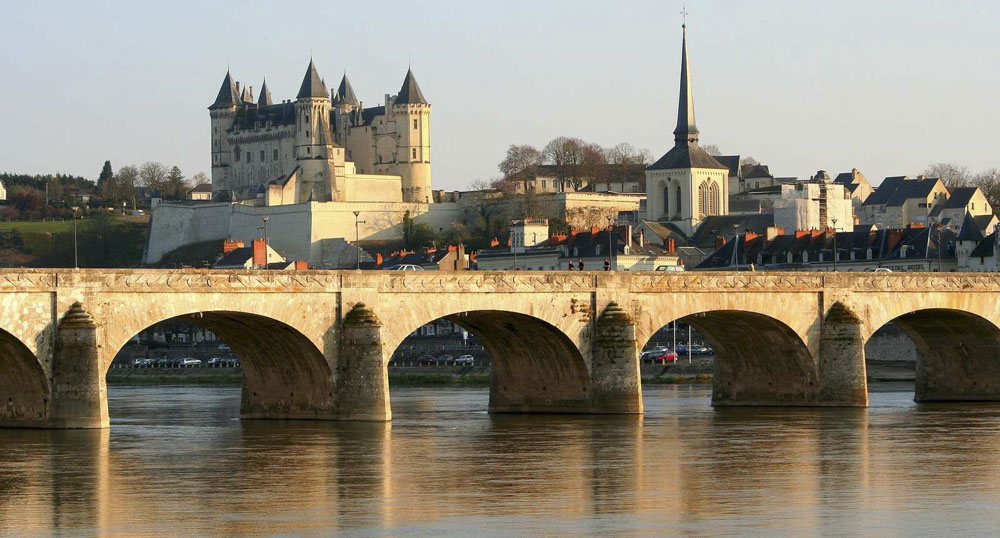
The architectural heritage of Maine et Loire is extensive and varied. Bagneux near Saumur has one of the biggest Neolithic burial chambers in Europe. It is incredible to imagine these enormous stones being manhandled into place over 5,000 years ago. Amongst the Gallo Roman remains, Gennes, on the south bank of the Loire, has the largest amphitheatre in western France where crowds of 5,000 watched gladiators in combat between the 1st and 3rd centuries. Nearby the Dolmen de la Madeleine, is one of the largest in France. Equally fascinating are the troglodyte caves, some dating back to the 15th century, where the ‘tuffeau’ or sandy chalk stone of which so many Châteaux are built was hollowed out. Over 1,000 tunnels remain and the caves are used as cellars, restaurants, museums, dovecotes, art galleries and even to farm mushrooms of every variety from button to Shiitake and other exotic species.
Towns in the Maine-et-Loire
Book a Hotel in the Maine-et-Loire
Saumur
Local wines, once predominantly white are nowadays more orientated towards reds. The ‘Crémant de Loire’, a sparkling brut Saumur is a wine with which to celebrate. Soft fruits and asparagus are plentiful and the speciality of ‘Paté aux Prunes’ consists of plum pastry filled with greengages. Once an important port with a rich legacy from the Protestant era, Saumur has a fairytale 14th century Château built by Louis 1st, overlooking the River Loire. Many beautiful Châteaux are to be found in this department including Brissac, the tallest Château in the Loire, the elegant 18th century Château de Montgeoffroy near Angers with its magnificent stables and display of carriages, the 15th century Château de Montsoreau on the banks of the Loire, featured in the Dumas novel “La Dame de Montsoreau” and the moated 15th century Château de Plessis-Bourré with its drawbridges and arcaded courtyard. Bourré, adviser and treasurer to the King, was a major influence in transforming many of the Loire fortresses to palaces.
Anjou
The horse rides high in the hearts of the people of Anjou. At St-Hilaire-St-Florent , besides the mushroom museum and fascinating mask museum, the National Riding School is famous for its team, the ‘Cadre Noir’, named after their elegant gold and black ceremonial uniforms whilst the Lion-d’Angers National Stud is equally well known in the equestrian world. The Basses Vallées Angevines is a perfect spot for bird watching thousands of migrating birds including the rare corncrake, snipe, lapwing, golden plover, pintail ducks, greylag geese and a host of other birds. At Fontevraud, fifteen Plantagenets are buried in the Abbey including Henry II, his Queen, Eleanor of Aquitaine and their son, Richard Coeur de Lion The largest of its kind in France, founded in 1101 for men and women, the Abbey is being meticulously restored and has possibly the finest cloisters in France.
Angers
Angers, capital of the department, was once the capital of the Plantaganet empire which stretched from Scotland to the Pyrenees. With 17 vast towers rising to 60 metres and impressive ramparts, the 13th century Château now houses the 14th century Apocalypse Tapestries depicting the end of the world, the fall of Babylon and the arrival of a new Jerusalem, extending over an amazing 103 metres. Commissioned by Louis I, Duke of Anjou, in 1375, this is said to be the most substantial collection of medieval weaving in the world. In the nearby Musée Jean Lurçat, is the tapestry, Le Chant Du Monde, woven between 1957 and 1966 with over ten 4 metre panels covering events from the Holocaust to the bombing of Hiroshima and the dawning of the space age. Amongst the many historic buildings in the old quarter are the 12th century Cathédrale St Maurice, 46 timber-framed houses, a 12th century apothecary’s house and the Hôtel des Pénitents, once a place of refuge for reformed prostitutes whilst the Benedictine ‘Abbaye du Ronceray’, was reserved for the daughters of the Nobility. In 1849, the Cointreau brothers founded a distillery and their son, Edouard, created the original recipe of the famous colourless liqueur, based on orange peel, of which some 30 million bottles are produced every year.
Towns in the Maine-et-Loire
| Title | Address | Description |
|---|---|---|
MAINE-ET-LOIRE | Maine-et-Loire, France |


